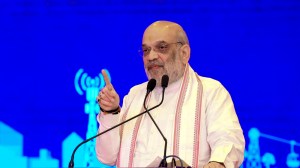What crisis? See pay-outs: Bajpai
Doomsayers had been talking of a possible payment crisis looming on the horizon as the market went into a free fall on Monday. But the Secur...

Doomsayers had been talking of a possible payment crisis looming on the horizon as the market went into a free fall on Monday. But the Securities and Exchange Board of India (Sebi), which has sifted through trading data submitted by the stock exchanges, has found that the pay-out for the National Stock Exchange (NSE) alone for the settlement of Friday last stood at over Rs 1000 crore. And the pay-out for the crucial “Manic Monday”, when the Sensex crashed 565 points, shows the NSE figure at about Rs 850 crore. The figure for Monday’s pay-out for the two bourses together is in excess of Rs 1000 crore.
Sebi chairman GN Bajpai said the settlement figures conclusively prove that there was absolutely no payment problem facing the stock exchanges, even as the markets tanked on Monday. “The fact that the markets have continued without any crisis blowing up points to the robustness of the risk management measures which are currently in place,” Bajpai said.
The Sebi chairman, who was in Jordan when the Monday crash happened, cut short his trip and returned by Tuesday, chairing a crucial internal meeting that day. After the meeting, Sebi had put out a statement saying the markets were safe and no crisis was imminent. What were the chief reasons why the markets remained crisis-free despite the steep fall in indices? Said Bajpai: “The system of automatic disablement of terminals, the T+2 settlement system, the value at risk (VAR) margining model and the continuous surveillance which is in place all added to ensure that nothing blew up in our faces.”
Sebi also faced enormous pressure on Monday to stop trading for the day — and also for the next couple of days — as market players panicked that continuing trading would knock the bottom off the markets completely. Bajpai said he went “completely by the rule book” where trading is halted for an hour if either of the benchmark indices fell 10 pc, and thereafter for two hours if they fall another five per cent and for the rest of the day if the total fall was 20 pc. “Once trading was halted a second time, we had to take the call whether it should be resumed after the two-hour cooling period. We took the decision to keep it open and in hindsight it has worked well and the confidence in the markets has remained intact,” he said.
Bajpai explained he had to consider both the downside and the upside in that context. If the Sensex — then down 18 pc — slid two pc more, anyway trading for the rest of the day would have to be halted under the rules. On the other hand, if there was a market recovery, then there would be no need for such a step and the confidence too would be restored.
Photos





- 01
- 02
- 03
- 04
- 05


























